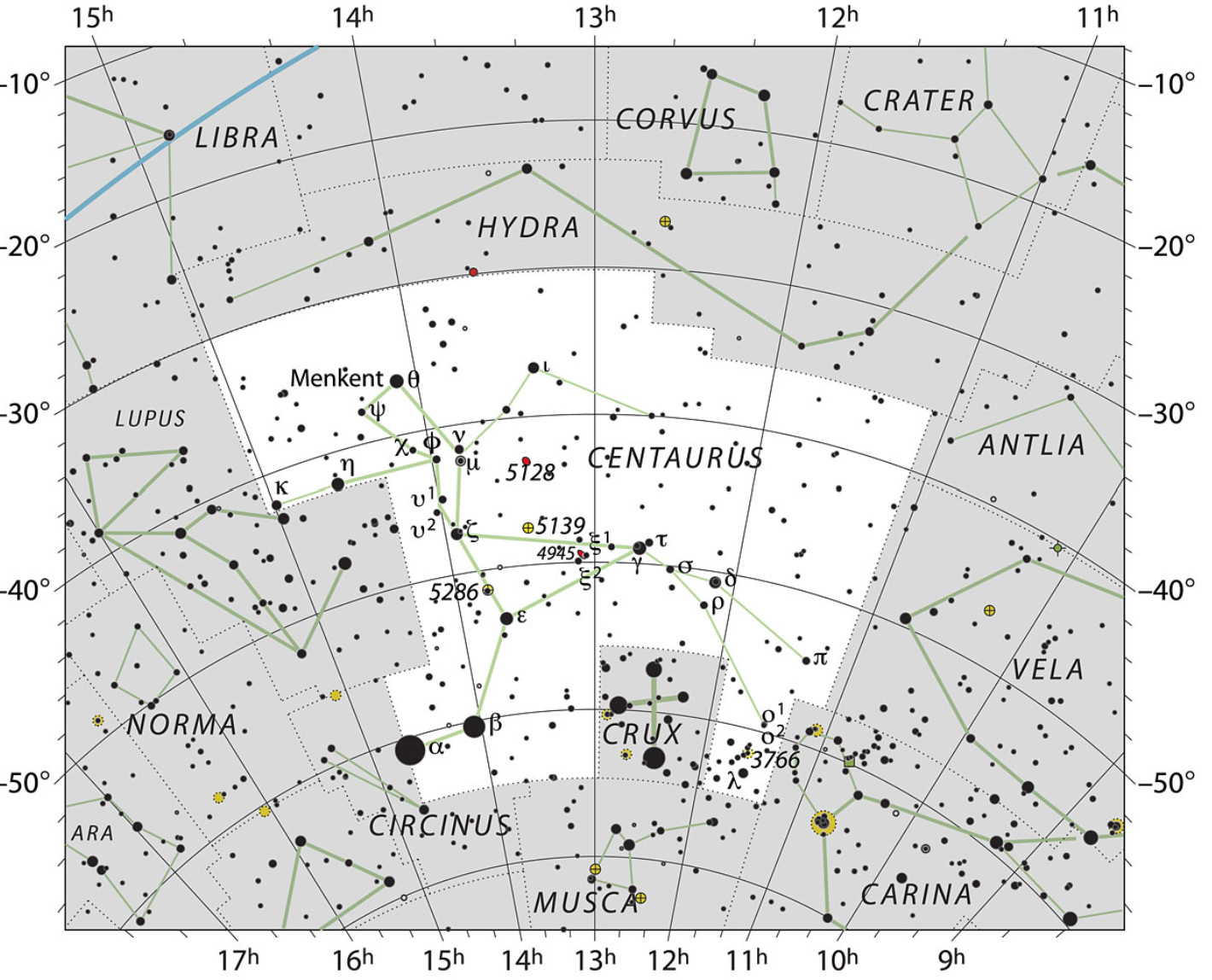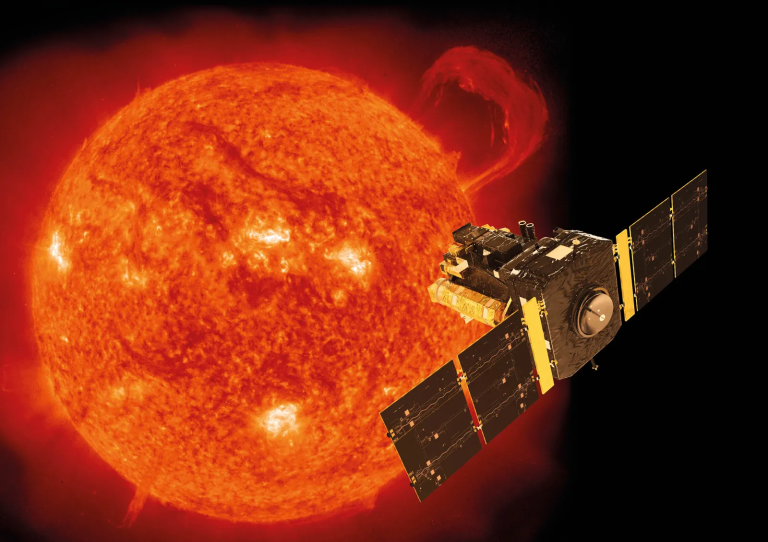This month, let’s delve into the constellation Centaurus, the ninth largest in the night sky, spanning 1,060 square degrees. Situated deep in the southern sky, Centaurus symbolizes the centaur Chiron from classical Greek mythology, depicted as a creature with the body of a horse and the upper torso of a man. In star maps, Centaurus is often shown wielding a spear, with a wolf, representing the neighboring constellation Lupus, impaled upon it.
THE TWO POINTERS
Dominating the constellation Centaurus are two prominent triple-star systems that appear as single stars to the naked eye. These stars, known as the “Two Pointers” or simply “the Pointers,” serve as a navigational aid in the night sky. Drawing a line from the first pointer, Alpha Centauri, to the second, Beta Centauri, and extending it further, will lead you to the constellation Crux, slightly to the north of this line. Interestingly, due to the proper motion of Alpha Centauri, this line will point directly at the center of Crux in a couple of thousand years.
THE ALPHA CENTAURI SYSTEM
The Alpha Centauri system consists of two bright, Sun-like stars, Rigil Kentaurus (Alpha Centauri A) and Toliman (Alpha Centauri B), along with an 11th-magnitude red dwarf known as Proxima Centauri, situated just over two degrees away from the primary pair. Alpha Centauri A and B have a combined apparent magnitude of -0.27, making them the third-brightest naked-eye star system. Remarkably, this system is also the closest to our own, with Proxima Centauri being the nearest member at just 4.2465 light-years away.
Through a small telescope, Alpha Centauri A and B are easily separated. Alpha Centauri A is a bit brighter and more luminous than our Sun, while Beta Centauri, slightly orange in color, is half as luminous.
EXPLORING STAR CLUSTERS IN CENTAURUS
The Milky Way fills around half of Centaurus, so it’s no surprise that this busy part of the sky is loaded with star clusters. Here are a few highlights near the Pointers for this month’s exploration:
NGC 5617: Start at Alpha Centauri and head in a straight line toward Beta Centauri. About a third of the way is the open cluster NGC 5617, discovered by James Dunlop in 1826. With a combined magnitude of 6.3, this cluster has a strong central concentration and boasts about 10 stars of 10th or 11th magnitude, along with dozens more fainter stars. This cluster is well-suited to telescopes with a 125 mm aperture or more under dark skies. There is a lovely scattering of red stars in the vicinity.

Fernando Menezes
Trumpler 22: Located around 0.5 degrees almost due south of NGC 5617 is another cluster known as Trumpler 22. Astronomers consider it a gravitationally bound sibling of NGC 5617. Trumpler 22 is sparser and harder to make out against the background stars.

NGC 5606: A tad more than 1 degree north and slightly west of NGC 5617 is the magnitude-7.7 cluster NGC 5606. This cluster contains around four dozen stars, with a condensed core of four closely spaced, white stars in a line running northeast-southwest.
NGC 5316: From Beta Centauri, slew just under 2 degrees south and a little west to find NGC 5316, which is on the cusp of naked-eye visibility at magnitude 6. Astronomers think there are more than 500 stars in this cluster, though you won’t see that many. Through a 5-inch aperture, expect to make out a dozen or so stars in a wedge shape; apertures of 20 to 40 cm will reveal dozens more.
NGC 5281: Continuing along the same line used to get from Beta Centauri to NGC 5316, go 1.3 degrees further to reach NGC 5281. The cluster has a magnitude of 5.9 with a tight center of magnitude-8.4. The cluster is headed by an orange star leading a small arc of white stars, with another arc of slightly fainter, bluish-white stars bisecting them. An aperture of 114 mm will reveal this cluster nicely.

FUTURE EXPLORATIONS
The list of deep-sky objects in Centaurus is extensive, but we’ll save them for another month. Consider this an introduction to whet your appetite. Still to come are the aforementioned NGC 5128, plus Omega Centauri (the finest globular cluster of them all), and numerous other clusters, nebulae, and double stars. Stay tuned for future installments as we continue to explore the wonders of Centaurus and beyond.



